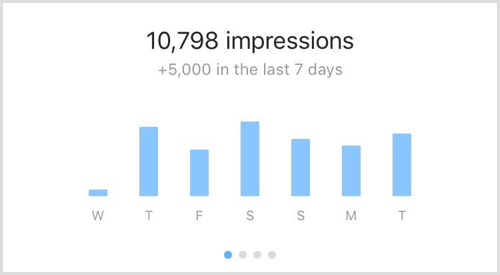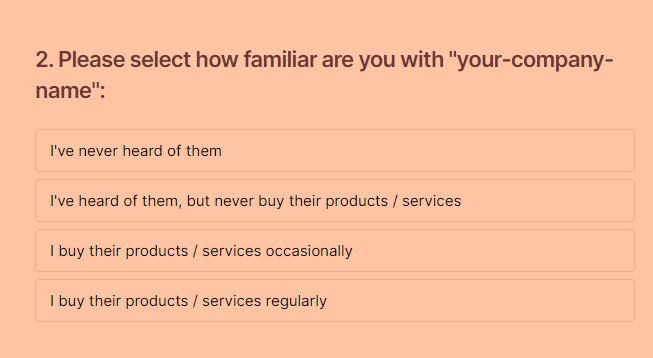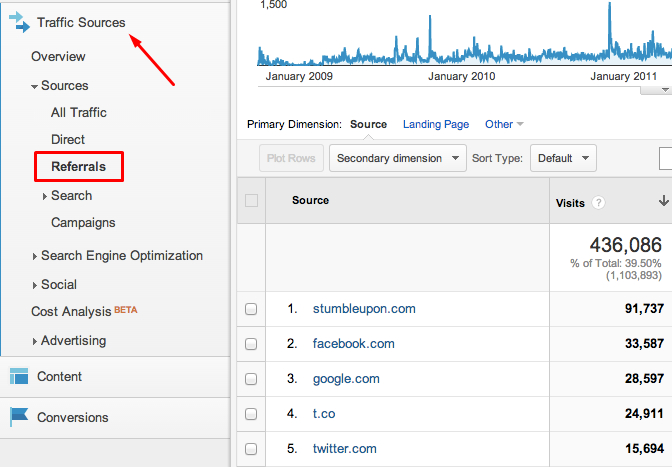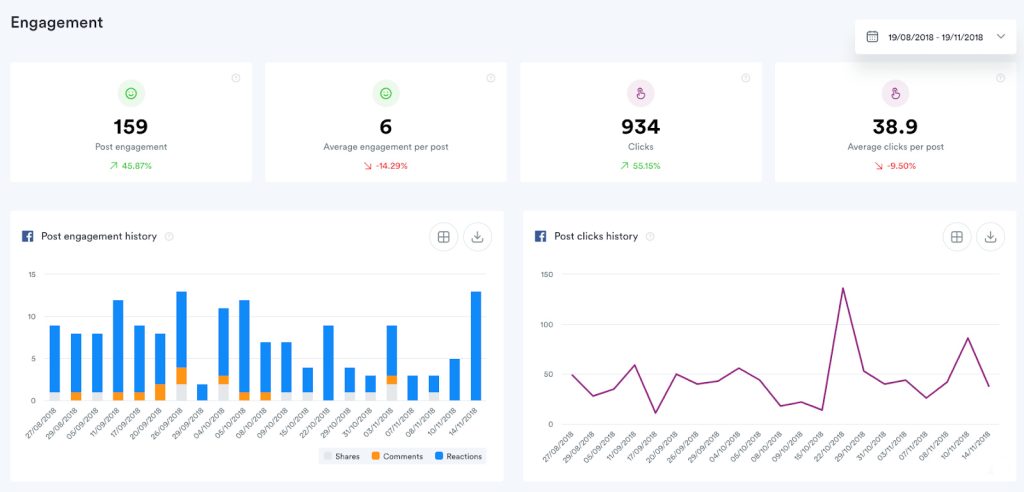The more people are accurately aware of your brand, the higher your sales will likely be. But how can you determine if your awareness campaign is reaching the customers that matter?
Brand awareness metrics help you track how well your marketing campaigns showcase your brand. They tell you how well you’re able to reach your target audience. They also provide valuable insight into how your marketing efforts and awareness campaigns can be improved.
💡 Read Brand Reputation 101: Monitoring, Analysis, and Management Tools
Find out how well your target market identifies your brand with these key brand awareness metrics.
1. Backlinks
Backlinks are inbound links that appear on external websites but direct traffic to your site. Do-follow backlinks help you rank highly on search engines. That’s great for getting potential leads to know about your brand.
An increase in your backlinks on authority websites means more are getting to know about your brand. They’re also finding your content valuable enough to link to it and direct their traffic to you.
Therefore, tracking backlinks is crucial to identifying how many sites vouch for your brand. Backlink checkers like Ahrefs and Semrush can help you do this. Of course, you want to see an increase in backlinks over time.
One popular method for boosting the number of backlinks you have is through guest posts. You create content for reputable websites and include links back to pages on your website.
Another method is by creating valuable and linkable assets. This is one of the top-performing link-building strategies for SaaS brands. Assets like infographics and research studies will naturally attract backlinks from other websites.
Read How to Find Branded Content Ideas by Analyzing Your Competitors With Determ
2. Brand Impressions
Impressions refer to the total number of times your post appears on your audience’s screens. It shows you how often your content appears — higher brand impressions indicate you’re reaching more of your intended audience.
With the data from your impressions, you can measure other key brand awareness metrics such as customer engagement, website traffic, click-through rate, etc. These help you determine whether your target market receives your marketing campaign the way you intend to.
To boost your brand impressions, amplify your social media efforts. Hop on social trends, engage in social public relations, and run more adverts on relevant social channels.

Track your brand impressions by checking your analytics data. On Instagram, for instance, go to your Instagram Analytics page. You can see the number of impressions your posts have garnered over time. This is illustrated in the chart above.
For your website, you can use Google Analytics to track how many impressions your brand gets.
Read Why Brand Reputation Monitoring Is Important (And How to Do It Right)
3. Branded Search Volume
Branded search happens when a user searches for a specific business. They do this either by including the brand name or a branded product in the searched topic.
So, if your brand name is “Yippee Yay Organics,” for example, branded searches may include keywords like “Yippee Yay” or “Yay Organics.”
Branded searches only happen when users are already aware of your brand and product offerings. They’re a great way to measure how effective your brand awareness campaigns are.
To measure branded search volume, use a keyword research tool or Google Analytics. You’ll see how many searches fall under your brand’s name or a variant.
An increased volume of branded searches means more are becoming aware of your brand. So, your brand awareness campaigns are working.
Read Brand Metrics Explained: Everything You Can Find in Your Determ Reports
4. Brand Awareness Surveys
Track customer feedback using survey questionnaires. This can help you identify areas where consumers may not be aware of your brand or its offerings. By addressing these gaps in awareness, you can improve your branding and marketing efforts. This, in turn, can help to increase brand awareness among your target audience.
Your brand awareness customer surveys must contain questions that look at these areas:
- Recognition: Does the consumer recognize your brand and its logo?
- Recall: Can the consumer remember your brand without being prompted?
- Associations: What emotions, values, or other associations does the consumer have with your brand? This is also known as brand affinity.
- Purchase intent: Is the consumer likely to consider purchasing from your brand in the future?
Read B2B Brand Tracking: How To Measure What Matters
When creating your brand awareness survey questions, craft questions requiring simple and direct answers. You can use survey templates from Typeform, Survio, or SurveyMonkey. They come with pre-designed, interactive, simple questions, as shown below.

Finally, target the questions to the right audience to get relevant results.
Customer interviews, online reviews, and social media interactions are other ways to generate customer feedback.
Read How To Write A Social Media Report: Guide For Beginners
5. Referral Traffic
Referral traffic is when visitors come to your website from other sites. A good amount of referral traffic shows that your website has been recommended on other websites. It’s a good indicator of increased brand awareness.

Referral traffic is a crucial brand awareness metric to track. It shows you how many potentially qualified leads visit your website from other authority websites.
You can use Google Analytics to track your referral score. It reveals how visitors reached your website and from which referral source they came. See the above image for this.
Anything from 8% and above is regarded as a high referral traffic score.
To improve your referral traffic score, you can guest blog on industry websites. You can also get featured on trusted review sites, and publish relevant guides.
6. Social Media Engagement
Your social media engagement indicates how much your followers know about you. Let’s say you consistently have minimal engagement. It’s a sign there’s not much awareness about your brand on that social channel.
Exceptional social content frequently generates interactions. These interactions come in the form of likes, mentions, comments, reposts, and shares. They ultimately attract more people to your page.
The type of engagement you have also suggests how much awareness your followers have about you.
Let’s say you generate significantly more likes on Instagram than comments. It may mean that while people see your posts, they may not find them engaging enough to comment on.
Read Social Media Monitoring and Social Media Management – Definition and Differences

To measure your social media performance, visit the internal analytics hub of your social platforms. The screenshot above shows the Facebook analytics center. In the hub, you will find a breakdown of your social shares, likes, clicks, and more.
7. The Volume of Mentions
Mentions refer to when your brand name, products, or services are mentioned on social platforms. It’s a tell-tale sign that people know about you.
However, the vast nature of the internet makes it difficult to track your mentions online accurately. Social listening tools help in this situation.

Mediatoolkit, for instance, helps you track your brand mentions online using specific keywords. Just set up the tool to receive real-time alerts whenever your name shows up on social platforms, blogs, etc.
Read How to Efficiently Track Mentions Online
8. Website Conversions
Conversion occurs when a potential customer clicks on your link and takes your desired action. The action can be making a purchase or signing up for your newsletter.
Your conversion rate is calculated by dividing the number of conversions on your website by the number of visitors. Then multiply the result by 100%.
Let’s say you get a lot of website traffic but very few conversions. This shows that your target market is aware of your brand, but your offerings may not be convincing. It’s possible that they’re not yet ready to make a purchase.
You can align your awareness strategies with the marketing campaigns for the other customer journey stages. Analyze your website conversions to do this.
9. Website Traffic
Website traffic is the volume of web users that visit your website—it is measured in “visits” or “sessions.”
Your website traffic helps you determine how many people your website or content attracts. When your website traffic increases, it means your online campaigns are pulling in more leads.
There are different sources of website traffic to pay attention to. These include direct website traffic, organic traffic, email and social media marketing, etc.
You can use Google Analytics or other similar tools to analyze your website traffic over time. This can help you see how your brand awareness grows.
To drive traffic to your website, optimize your SEO campaigns for better rankings. Also, post social media quality content that directs users to your site.
Read 5 Ways Social Listening Enhances Your SEO Campaigns
In Closing
Tracking brand awareness metrics is crucial to improving the effectiveness of branding efforts. Key metrics to pay attention to include brand impressions and customer feedback. Track your social media engagement, website traffic, and branded search volume, too.
By regularly analyzing these brand awareness metrics, you can make informed decisions about your marketing strategies. This helps improve your chances of market success.
Martin Gessner is the Founder of Focus on Force. He has spent over 10 years working in various Salesforce roles including business analyst, project manager, consultant and solutions architect. Along the way he has earned twelve certifications, published “The Salesforce Career Playbook”, and helps Salesforce professionals learn more about Salesforce, develop their career and prepare for certifications.


